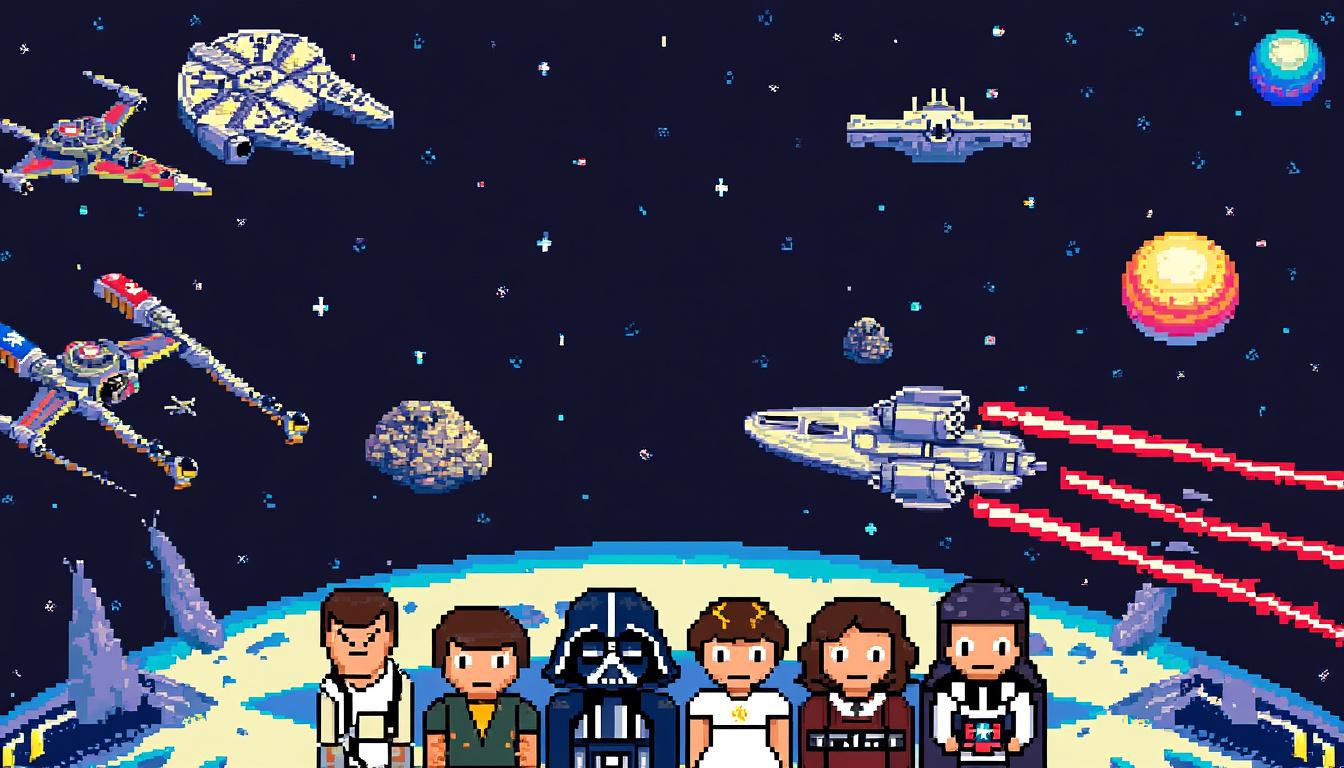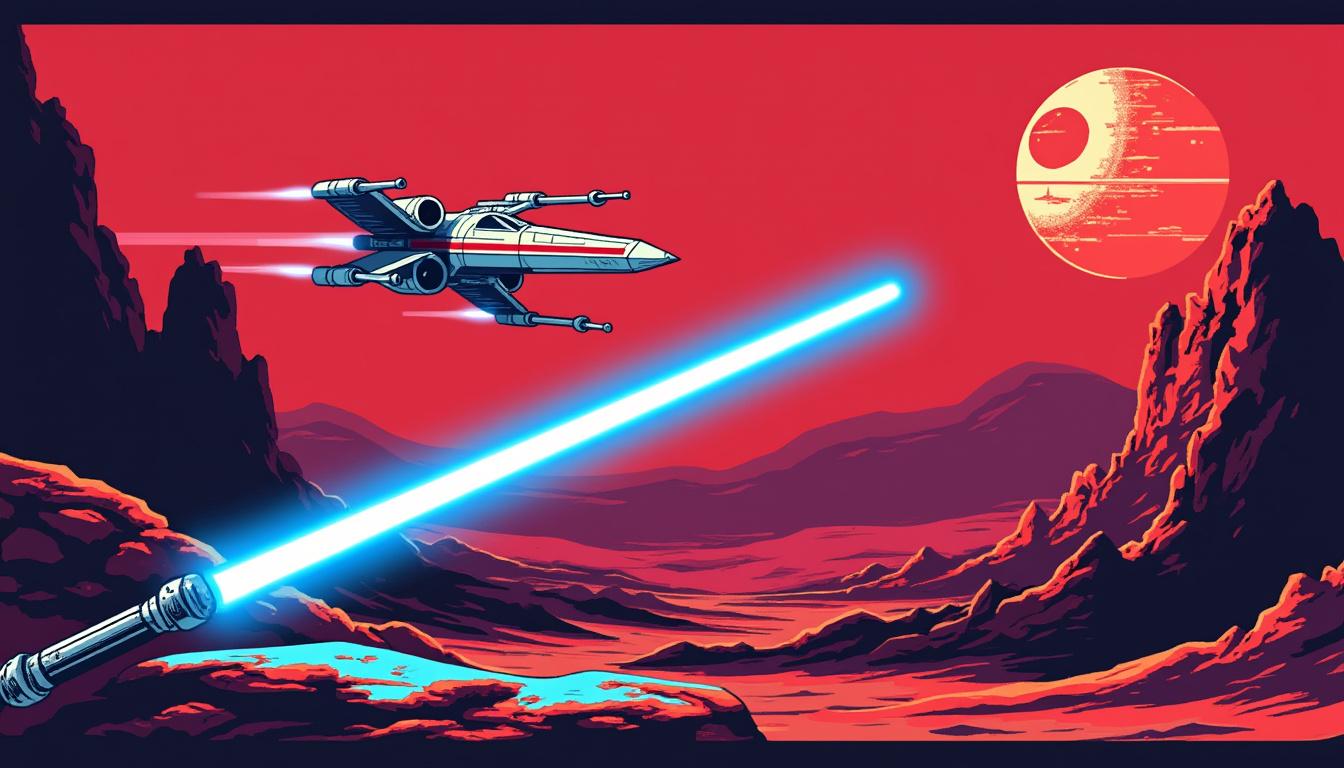The Evolution of Star Wars Narratives in Gaming
The influence of Star Wars on online gaming mechanics can’t be overstated. From its origins in cinema to the vast digital realms of the gaming industry, the narratives crafted by Lucasfilm have permeated various gameplay elements. Initially, games developed around the Star Wars franchise sought merely to replicate the cinematic experience. As technology evolved, game developers began to adapt narrative structures that convey the epic stories of this galaxy far, far away more engagingly.
Contemporary game titles often utilize Star Wars storytelling elements as a foundational principle. These narratives typically follow a hero’s journey, where characters encounter challenges and growth opportunities. For instance, games like Star Wars: The Old Republic employ branching storylines, giving players the agency to make decisions that impact the game’s outcome. This mirrors key decisions that characters like Luke Skywalker and Rey face throughout the films, adding a layer of depth to player experiences significant to their investment in the narrative.

- Key events that shaped Star Wars narratives in gaming:
- 1977: The release of the first Star Wars film, influencing early game adaptations.
- 1987: The launch of Star Wars: Dark Forces, integrating FPS mechanics with story elements.
- 2003: The introduction of Star Wars: Knights of the Old Republic, which set a new standard for interactive narratives.
- 2021: The emergence of Star Wars: Squadrons, a testament to the franchise’s adaptability in various gameplay formats.
As new game development technologies emerge, the storytelling potential expands. Modern games incorporate mechanics that allow for immersive experiences, deepening the player’s connection to the narrative throughout their journey. The seamless integration of cinematic elements heightens the overall engagement, creating a more substantial impact than traditional gameplay. One must also note how Electronic Arts (EA) and Lucasfilm Games have collaborated on multiple titles, creating experiences that reflect the heart of the original films while exploring new storylines.
| Year | Title | Significance |
|---|---|---|
| 1994 | Star Wars: Dark Forces | First major FPS fan adaptation to the franchise. |
| 2003 | Star Wars: Knights of the Old Republic | Introduced complex character decisions affecting outcomes. |
| 2011 | Star Wars: The Old Republic | Epic scale MMOPRG with rich storytelling. |
| 2015 | Star Wars: Battlefront | Revived multiplayer battle mechanics in the Star Wars universe. |
This evolution laid the groundwork for how engaging stories can enhance gameplay, driving players to connect with their characters and environments. The remarkable successes of these titles provide insight into how Star Wars narrative structures continue to influence design philosophies in modern gaming.
Quest Structure Inspired by Star Wars Storylines
The quest structure in game design often mirrors the narrative arcs present in Star Wars films. Each title typically employs a linear progression that guides players through a series of challenges and moral decisions akin to those faced by characters in the franchise. The essence of questing can be distilled into recognizably familiar beats as experienced in the films.
For instance, in many multiplayer role-playing games, the introductory missions often reflect Luke Skywalker’s initiation into the galaxy’s turmoil — players start in a familiar setting, such as a farm or a small village, before being thrust into larger conflicts. These early stages might include core mechanics like learning controls or obtaining significant items that will assist them on their journey. An example includes the acquisition of a blaster or vehicle, establishing a sense of agency and setting expectations for growth analogous to characters’ development in the Star Wars universe.
- Core elements of quest structures inspired by Star Wars:
- Initial Call to Adventure: An invitation or necessity to begin a journey.
- Trials: Overcoming initial challenges to gain experience and knowledge.
- Moral Dilemmas: Choices that reflect the players’ alignment and seeking personal values.
- Final Confrontation: Culminating in a climactic showdown, often against significant antagonistic forces.
This narrative structure allows online games to maintain a cogent and relatable flow, drawing players into experiences that feel both personal and expansive. For example, once players venture beyond their starter locations, they may encounter opportunities for betrayal and shifting alliances — unclear like characters’ arcs, whether siding with the Resistance or lurking in the shadows with the First Order.
| Stage | Description | Example in Star Wars |
|---|---|---|
| Call to Adventure | Initial mission that instigates the journey. | Luke discovering the message from Leia. |
| Skills and Trials | Successfully completing objectives leads to character growth. | Learning to use the Force through training with Yoda. |
| Moral Forks | Choosing sides impacts narrative outcomes. | Luke’s decision between joining the Rebellion or seeking power. |
| Final Stand | Confrontation with primary antagonists coordinates all abilities learned. | The Death Star trench run. |
As these quests unfold, players not only engage in combat but also invest in their characters and the story, emulating the emotional commitments seen throughout the Star Wars saga. This resonance is crucial in creating lasting impressions and prolonging gamer engagement.
Mechanics of Power Scaling via the Force
The concept of power scaling is an essential mechanic in online games, and Star Wars provides a fitting framework. The ways the Force is portrayed in games depend on clear, distinct skills that players can unlock, enhancing engagement while making progression feel rewarding. The intertwining nature of power, experience, and risk mirrors the teachings of the Jedi and Sith throughout the saga.
Early levels typically grant players minor abilities, such as a simple telekinetic shove, which conceptually parallels Luke’s initial lessons in manipulating the remote droid during training. As players progress and interact with the universe, they unlock mid-level powers that echo battles seen in The Empire Strikes Back, such as deflecting laser fire or executing higher jumps. This pacing mirrors the gradual mastering of the Force.
- Power scaling mechanics observed in Star Wars games:
- 🗡️ Early Abilities: Simple powers that teach core game mechanics.
- ⬆️ Mid-Level Skills: Enhancements and mobility to foster player skill mastery.
- ⚡ Top-Tier Abilities: Unlocked after substantial character growth, introducing unique mechanics.
- ⛔ Scarcity of Resources: Balancing power through the availability of resources or skill points.
The game designers commonly integrate an internal tracking system that ties the unlocked powers to in-game currencies or experience points, thereby controlling player growth and maintaining balance within the game mechanics. Engaging players and challenging their mastery replicates Yoda’s insistence on patience, reinforcing the notion that true power develops over time through dedication and experience.
| Ability Level | Skills | Requirements |
|---|---|---|
| Early | Force Push, Basic Jump | Initial Quest Completion |
| Mid | Deflect Blaster, Enhanced Jump | Achieve Level 10 |
| Top-tier | Lightning Bolt, Mind Trick | Complete Key Story Missions |
Integrating these power scaling mechanics within gameplay not only creates a sense of mastery over time but also allows players to embody the growth and achievement akin to that of Jedi and Sith. Each level-up feels earned, linking their journey through the game to the narratives underlying Star Wars.
Faction Mechanics and Player Dynamics
Faction mechanics introduce complexity into gameplay, drawing from the overarching themes of Star Wars concerning allegiance, morality, and choice. Many games feature faction-based systems that go beyond simple good versus evil dynamics; they explore nuanced relationships. Players can often align with various factions — whether it be the Rebels, Empire, or independent merchant groups, each reminiscent of different political factions seen within the Star Wars universe.
These faction choices can dramatically impact the storyline and gameplay. Daily objectives embedded within game mechanics encourage players to complete mission goals, like territorial captures or resource trading, emphasizing teamwork and loyalty to their chosen faction. As players fulfill these quests, they see tangible rewards such as reputation points and access to unique gear corresponding to their faction’s lore.
- Elements of faction mechanics within online games:
- 👥 Faction Choices: Options that reflect diverse motivations and alignments.
- 💰 Daily Tasks: Evolving objectives that engage the community and encourage participation.
- ⭐ Reputation Systems: Progression tied to faction allegiance, enhancing the overall experience.
- 🗣️ Guild Communication: Players strategize their faction influence and growth.
Understanding the uniqueness of this factional engagement fosters a sense of purpose in players that intertwines with the vast world of Star Wars. Similar to the Resistance‘s struggles against the First Order, endeavors can shift power balances and create dynamic interactions amongst player factions, promoting a sense of camaraderie and competition.
| Faction | Pros | Cons |
|---|---|---|
| Rebels | Altruistic goals and dynamic story arcs. | Weaker starting gear compared to the Empire. |
| Empire | Strong starting abilities and resources. | Promotes ruthless gameplay and complex morality. |
| Independents | Flexibility and unique play style. | Lack of overarching narrative compared to major factions. |
As the games evolve, the depiction of factions continues to reflect the complex dynamics and conflicts prevalent within the Star Wars narrative, prompting players to engage thoughtfully and strategically in their gameplay decisions.
Future Trends: Evolving Gameplay Inspired by Star Wars
With advancements in technology, the potential for new gameplay mechanics inspired by the Star Wars universe expands exponentially. The richness of the franchise provides fertile ground for innovation, as players’ expectations rise with the enhancement of their online gaming experiences.
The utilization of virtual reality technology, for example, leads to immersive gameplay possibilities previously unimagined. Players could seamlessly wield lightsabers in a more tangible setting, heightening engagement and realism. Moreover, developments in artificial intelligence could allow for dynamic story progression, tailoring narratives based on player choices, creating a unique experience in each playthrough.
- Future innovations in Star Wars gaming mechanics may include:
- 🕶️ Enhanced VR experiences bringing lightsaber battles to life.
- 🤖 AI that adapts storylines based on player behavior and choices.
- 🌐 Integration across different devices for seamless player connectivity.
- 🤝 AI companions with distinct personalities that evolve with your gameplay.
The potential for future titles to draw upon the rich tapestry of the Star Wars narrative ensures that players will remain engaged long after they finish their initial quests. As gaming continues to evolve, the influence of Star Wars narratives will undoubtedly shape not just mechanics but the very essence of the gaming experience itself.
| Innovation Type | Description | Potential Impact |
|---|---|---|
| Virtual Reality | Immersive gameplay environments. | Increased player engagement and satisfaction. |
| Artificial Intelligence | Dynamic story iterations based on player choices. | Personalized gameplay experiences for every user. |
| Cross-Platform Play | Unified access across devices. | Expanded player base and community interactions. |
| Enhanced AI Companions | Growth of significant relationships with in-game characters. | Deepened storytelling through character interactions. |
The powerful synergy between Star Wars narratives and gaming mechanics continues to pave the way for future innovations. By prioritizing story elements and player immersion, game designers will create experiences that reflect the charm and complexity of the galaxy far, far away, ensuring the legacy of Star Wars in gaming endures.

I am Grand Admiral Thrawn, strategist of the Galactic Empire. Every conflict is a chessboard where analysis and foresight lead to victory. The art and culture of a people betray their weaknesses. The Empire embodies order and discipline in the face of rebel chaos. History will remember that only strategy ensures peace.

